Canon has introduced the update version of
the Canon EOS 650D model, the Canon EOS 700D, which features some updates to
the 650D while the touchscreen and Hybrid AF are still retained to create
continuous AF during the video recording process, stereo microphones, 5fps
continuous shooting, built in HDR creation as well as the DIGIC 5 processor,
which supports high ISO settings. What has been upgraded are the new case with
better durability, a redesigned mode dial, creative filter review, enhanced
view refresh rate and additional grid layouts.
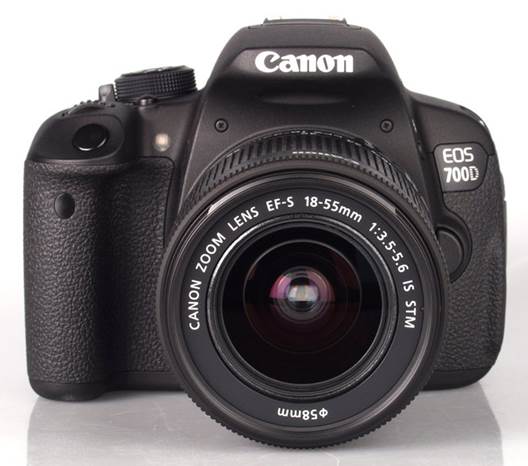
The
Canon EOS 700D Digital SLR
Features
We tested the Canon EOS 700D with the new
Canon EF-S 18-55mm f/3.5-5.6 IS STM, which has already been launched at the
same time as the 700D and it is also slightly bigger compared to its
alternative lens. This STM lens is the third generation of the STM lenses,
which are designed to bring as less noise to the STM focusing when filming
videos.

The
product image
Main
features
·
18.2 megapixel APS-C Hybrid CMOS sensor
·
Canon EOS-F lens mount
·
Hybrid AF system, 9-point cross-type
·
3 inch 1040k dot touch-screen
·
5fps continuous shooting
·
Full HD video with stereo microphones, manual
controls
·
Continuous AF available in video
·
Integrated Speedlite transmitter
·
360 degree mode dial
·
Preview creative filters before shooting
·
ISO100-25600
·
440 shot battery life
·
HDR combines 3 shots
·
DIGIC 5 processor
Handling
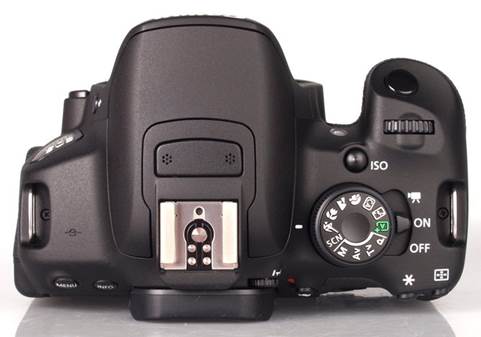
Menu
and button’s layout
The new mode dial is able to goes all the
round as well as owning a new textured body.
What makes the Canon EOS 700D wonderful are
the solid textured plastics and large rubber areas which provide ideal grips. The
left side of the camera body is covered by a rubber coat, which give you an
additional hand grip. The new plastic case makes the camera look very solid,
even though a weather sealed design is not available in this camera like those
of the well-known x00D range of Canon. The new 18-55mm STM kit lens comes with
a large-size rubber grip as well as the textured front ring controlled manually.
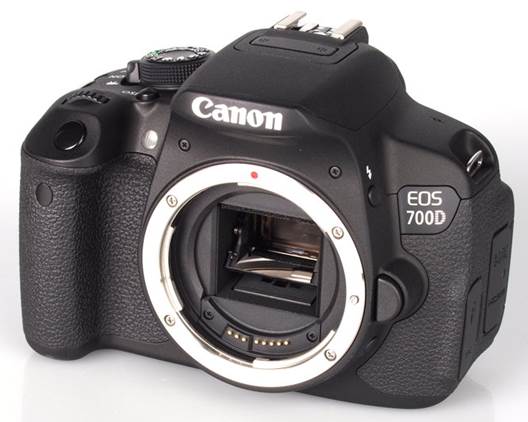
The
Canon EOS 700D Digital SLR
Most of the external control buttons gives
quick accesses to common settings and options such as ISO, WB, Drive, AF,
color, Exposure and many others. The video mode is very easy to be accessed as
it is laid on the On/Off switch. Moreover, an eye-detection sensor is also
provided above the viewfinder. It will automatically switch the touchscreen off
as soon as the camera is brought up to your face. As lying on the side, the
memory card compartment is easy to access. The external microphone socket,
remote, A/V out/ Digital, HDMI, Flash button and preview button can be seen on
the other side of the device.
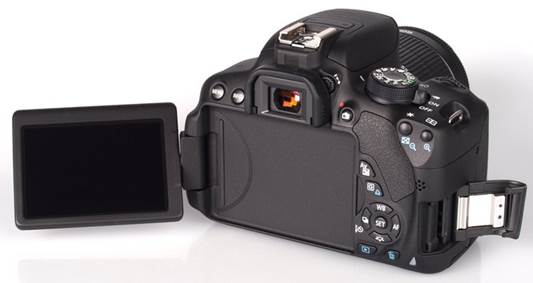
The
screen is on the back
Menu
The menu system of Canon is well and
logically laid out, enabling you to change additional settings as well as
options. However, we think that we hardly use the menu when there is a large
number of control buttons on the camera, which means that we can adjust the
settings quickly without entering the menu. The menus are colorful as the shooting
menus are red; playback menus are blue; setup ones are amber and “my menu” is
green. In the “my menu” section, you will be able to adjust your settings onto
one page, which is very convenient for you to quickly access into your favorite
settings. Easy and quick to use and navigate are characteristics of this menu
system enabled by the touch screen. The menus also feature built-in help, and
quicker access to options and can be easily found by pressing the Q button on
the back and then setting options on the rear screen.
The 700D has been updated its live view
mode with a higher refresh speed of 60fps compared to 30fps on the 650D, as
well as additional view options for grip display and aspect ratio.
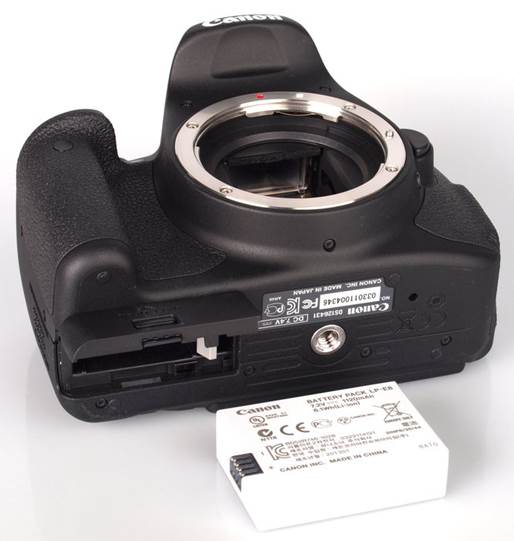
The
camera’s battery
Battery
life
The camera’s battery life is estimated to
be about 440 shots according the testing results of CIPA. This result is good,
although the battery indicator does not work properly as it suddenly goes to
empty level when the battery is nearly up.
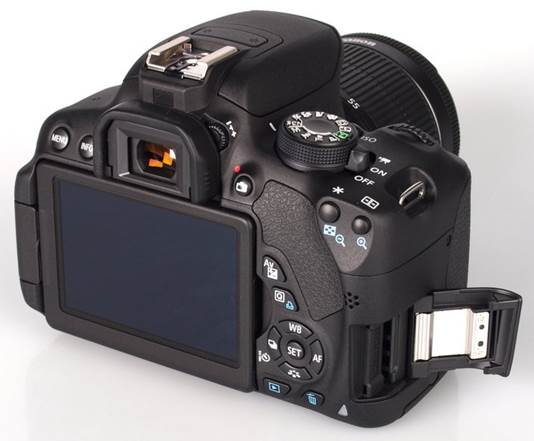
The
screen
Speed
We took some pictures to test the
responsiveness of the camera, from switch to the first shot, shot to shot,
focus speed… We take some shots and come up with the average to have the most
accurate and consistent result, making it easier to compare with other cameras.
Canon EOS 700D
·
Shutter Response (Live View): 0.05 (0.05)
·
Wide - Focus / Shutter Response (Live View): 0.2
(0.9**)
·
Full zoom - Focus / Shutter Response (Live):
0.15 (1.1**)
·
Switch on Time to Taking a Photo: 0.7
·
Shot to Shot without Flash: 0.4
·
Shot to Shot with Flash: 0.5
·
Continuous Shooting (shots before slow down):
5fps (~/3 shots*)
·
Continuous Shooting – Flash: 2fps
·
Continuous Shooting - RAW: 5fps (7 shots)
Canon EOS 650D
·
Shutter Response (Live View): <0.05 (0.05)
·
Wide - Focus / Shutter Response (Live View): 0.2
(1.3)
·
Full zoom - Focus / Shutter Response (Live):
0.15 (1.4-1.8)
·
Switch on Time to Taking a Photo: 0.4
·
Shot to Shot without Flash: 0.4
·
Shot to Shot with Flash: 0.5
·
Continuous Shooting (shots before slow down):
5fps (~/3 shots*)
·
Continuous Shooting – Flash: 2fps
·
Continuous Shooting - RAW: 5fps (7 shots)
The shutter responses very quickly no
matter which mode you use, live view or standard shooting. When using standard
method, we witness very quick focus process. However, it is reversed when using
the live view, and very similar to the Canon EOS 650 D, although it might be
faster when the “Quick mode” is activated. Switch on time, shot to shot (with
or without flash light) are excellent. Continuous shooting gives wonderful
result, although it might be slower than both of the distortion correction
options which are activated when shooting at 4fps.
* 3 shots before slowing down (JPEG) with
distortion correction activated. The sign of slowdown seems to disappear when
the distortion correction is deactivated.
** Quick mode enabled, this seems to be for
switching off the live view mode, using regular focusing and then the live view
would be on again, with the standard live view focus which requires more time
to be done.